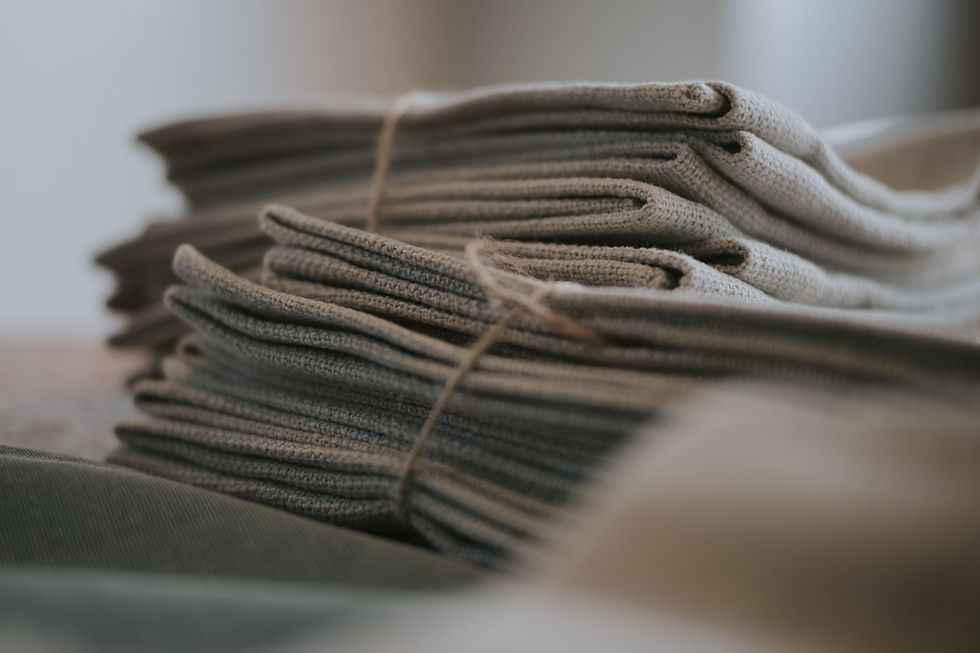
When I started my journey to the big world of sustainable fashion I thought that recycled fabric was the best option. My reasoning was that we are not producing new materials, so no emissions and recycling what already exists must need fewer emissions.
At that time some brands were advertising their recycled garments, and it’s been a very long time since we are strongly invited to divide our waste so it can be recycled.
So my idea about recycled fabric did make sense, didn't it?
But somehow it felt too simple, and I couldn’t see this recycled revolution in the shops. As I’m a very curious person I started to dig a bit and also took a few courses on sustainable fashion and circular economy and I found out that there is no such thing as recycled fabric available.
I was shocked. Perhaps you are shocked too.
Recycling fabric from fabric is a quite complex affair, as almost everything about fashion turned out to be.
Fabrics nowadays are mostly mixed fibres, they can be mixed natural, natural and synthetic or different types of synthetic in very much any kind of mix you can imagine. Synthetics, that come from oil/petroleum like polyester and nylon, are the most common, and also the cheapest. (see link below).
Mixed fibres do not exist to make our life complicated, but because very skilled people worked for generations in finding the best mixes for the various need we may have. For example, we like soft on our skin, warm in winter, and fresh in summer. We want soft, light and breathable (and... shining or transparent or bring colour..) for our sportswear, but also sheer and silky for the evening, but waterproof when needed, et. etc. We also want to spend the least possible.
This complexity is a problem when we need to recycle.
The first step is collecting the used clothes. We don't have a great system for that but let’s say we can do a systematic collection. To get to the recycling facilities, our discarded clothes need to be carefully sorted based on the materials, any trimmings or unrecyclable materials like zips, buttons etc. discarded. This is a job of precision and high skills, in fact so far machines cannot replace humans for this job. Like in the garment factories
What happens If we have roughly sorted fabrics in big quantities?
Multiple companies, investors and bright minds are working on technologies that can divide the fibres so we can recycle them, possibly to obtain the same quality as the original material. Mostly they look for recycling 100% pure fibres. Some companies are working on recycled mixed fibres, creating innovative textiles. But it’s a work in progress.
So recycling fabrics to make other fabrics is something mostly not available to us at the moment, fortunately with some exceptions.
The clothes, bags and shoes we read coming from recycled plastic, they are usually coming from our discarded PET bottles. This is not bad per se, we are still recycling plastic, but ideally, PVC bottles should come back to being bottles, and polyester should go back to being polyester, the famous circle.
Fun not so fun fact, recycled plastic bottles are so popular that they are starting to talk about the shortage of plastic bottles...
There are many types of recycled materials, from different sources and with different impacts. Very often when the garment is called recycled only part of it is made of recycled fabric.
So the matter is tricky, but info about our new clothes are close as the first search on our phones unless we really know and trust the brand. If the details are not available online then perhaps we already know enough about it. If there are, labels are the way to check pre-loved clothes, even if sometimes they are a bit unreliable,
Tips about labels here
This is a non-exhaustive talk about the vast topic of recycled synthetic fabric in the sphere of sustainable fashion. The sector and institutions are very much active and technological advancement is constant, so things are constantly changing, fortunately. And fortunately, our attention on what we buy, and the relevance that we show to climate-related issues is changing the decision of the main brands.
But in conclusion, my initial black-and-white idea about the goodness of recycled fabrics had to be revised and replaced by a very much more nouanced view.
A long time has passed since this realization, and now for my creations, I used only natural fibres coming from end-of-the-roll and deadstock fabric.
Great report about fibres and materials: https://textileexchange.org/app/uploads/2021/08/Textile-Exchange_Preferred-Fiber-and-Materials-Market-Report_2021.pdf
More information:
コメント